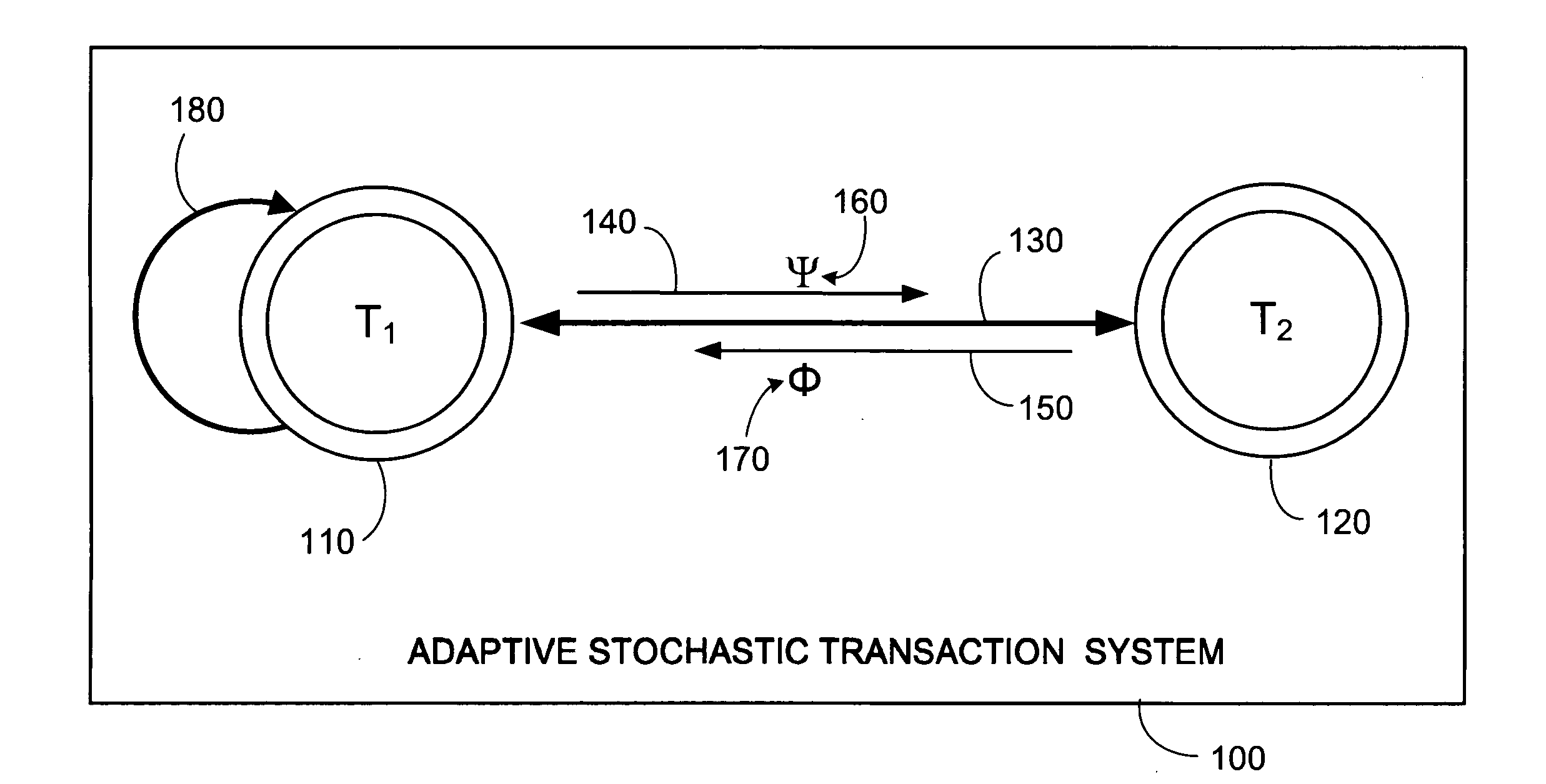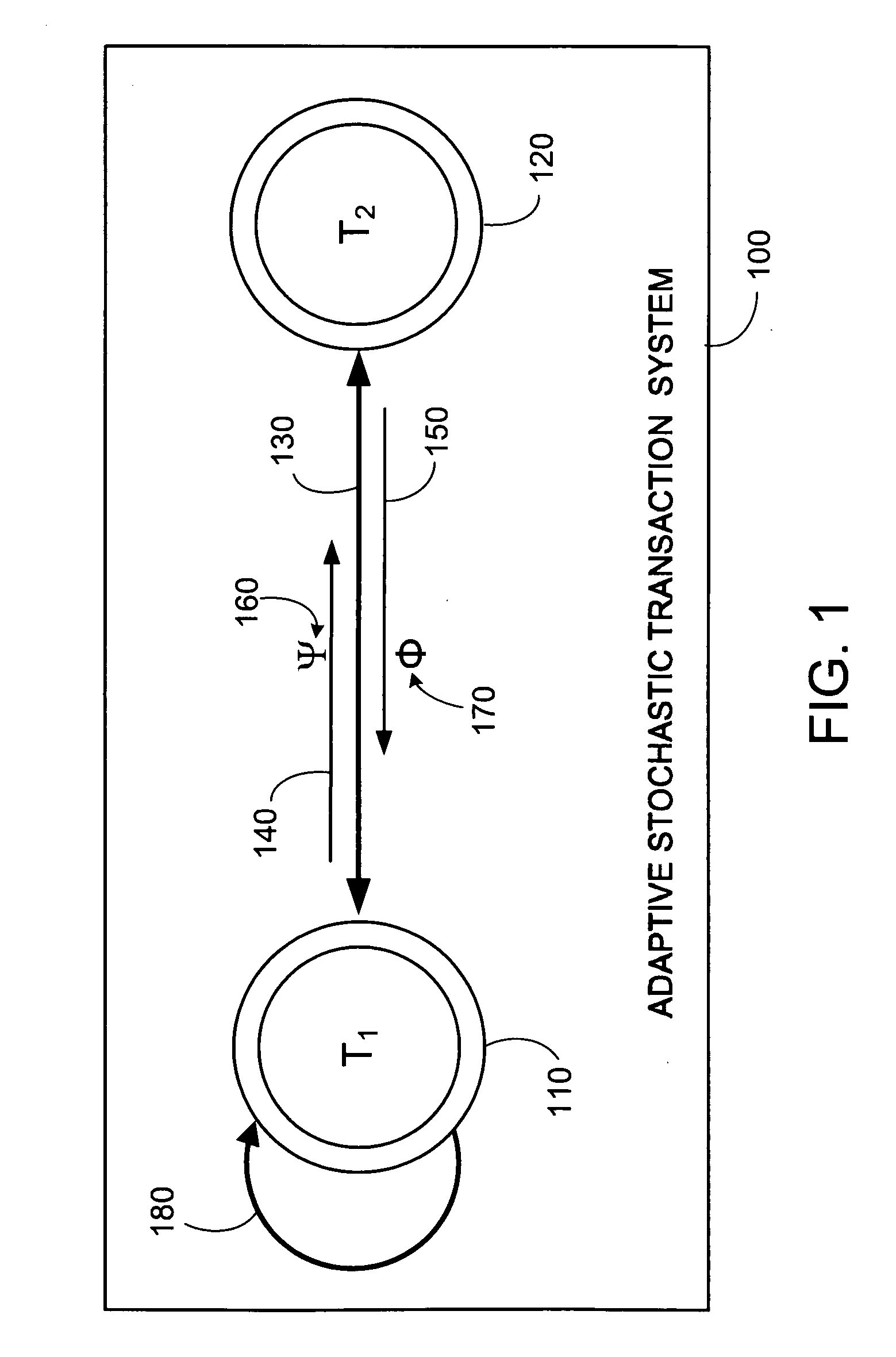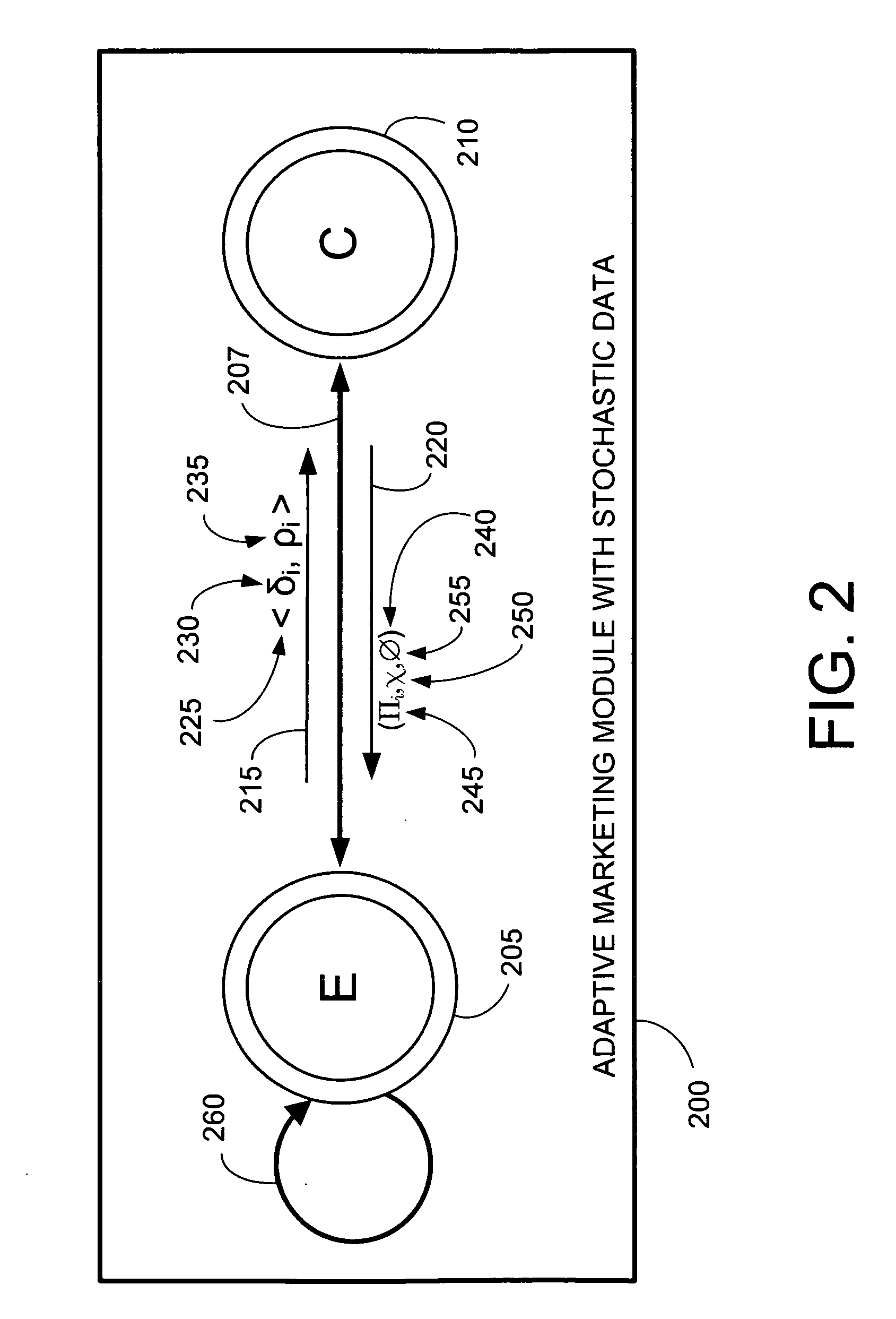Adaptive stochastic transaction system
a transaction system and stochastic technology, applied in the field of transaction systems, can solve the problems of affecting the fairness of a transaction, affecting trade, and affecting the willingness of parties to deal,
- Summary
- Abstract
- Description
- Claims
- Application Information
AI Technical Summary
Benefits of technology
Problems solved by technology
Method used
Image
Examples
Embodiment Construction
[0034] Embodiments of the present invention encompass an adaptive stochastic transaction system, method, and computer-readable article of manufacture, in which one entity is constituted to communicate, over a communication route, a stochastic decision token to at least one second entity, with the intention of inducing the at least one second entity to respond with a desired behavior to the stochastic decision token. The behavior can include the second entity responding to the stochastic decision token with a corresponding response token.
[0035] A transaction can describe a unit of exchange between the entities and may include a signaling protocol by which the entities indicate their respective transaction intentions. By means of a transaction, the signaling entities exchange a trade object for a trade value. In general, a trade object may be a product, a service, an asset, a resource, an allocation, or an equivalent, as well as a combination thereof. A trade value can be represented...
PUM
 Login to View More
Login to View More Abstract
Description
Claims
Application Information
 Login to View More
Login to View More - R&D
- Intellectual Property
- Life Sciences
- Materials
- Tech Scout
- Unparalleled Data Quality
- Higher Quality Content
- 60% Fewer Hallucinations
Browse by: Latest US Patents, China's latest patents, Technical Efficacy Thesaurus, Application Domain, Technology Topic, Popular Technical Reports.
© 2025 PatSnap. All rights reserved.Legal|Privacy policy|Modern Slavery Act Transparency Statement|Sitemap|About US| Contact US: help@patsnap.com



